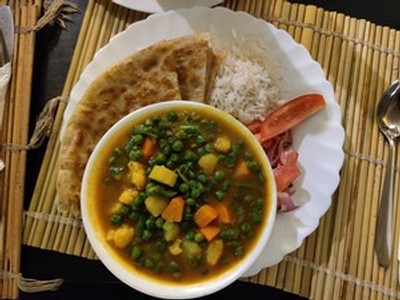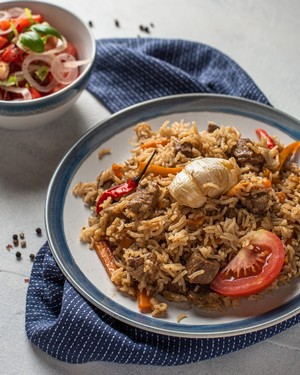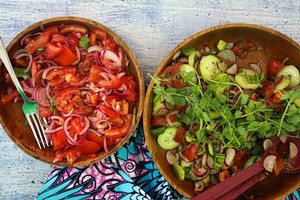Chapati Recipe
Chapatis are a big part of Kenyan culture. People in Kenya love to have chapatis with tea and other tasty dishes. The best thing about chapatis is that they go well with any type of stew, and you can also enjoy them with vegetarian dishes. If you want to make your chapati meal even more delicious, try pairing it with Mellowood 2017 Marsanne or 2018 Zinfandel Rose. These tasty wines will bring out the best flavors in this light and delicious dish.
RECIPE:

Ingredients:
2 cups all-purpose flour
1 teaspoon salt
1 tablespoon vegetable oil
1 cup warm water (approximately)
Additional vegetable oil for frying
Instructions:
1. In a large mixing bowl, combine the all-purpose flour and salt. Mix well.
2. Make a well in the center of the flour mixture and add the vegetable oil. Gradually pour in the warm water while stirring the mixture with a spoon or your hands. Continue adding water until the dough comes together and is soft but not sticky.
3. Transfer the dough onto a clean, floured surface and knead for about 5-7 minutes until it becomes smooth and elastic. You may need to sprinkle some additional flour if the dough is too sticky.
4. Divide the dough into 8-10 equal-sized balls. Roll each ball between your hands to make them smooth and round.
5. Take one dough ball and flatten it slightly with your palm. Dust it with flour and roll it out into a thin, round disc about 6-8 inches in diameter. You can use a rolling pin for this.
6. Brush the surface of the rolled-out chapati with a thin layer of vegetable oil. Then, fold the chapati in half, and once again, brush the surface with oil. Finally, fold it into a triangle.
7. Repeat the rolling, oiling, and folding process with the remaining dough balls.
8. Heat a skillet or non-stick pan over medium heat. Place one folded chapati onto the hot skillet and cook for about 1-2 minutes on each side until it turns golden brown and puffs up slightly. You can press the chapati gently with a spatula to help it puff up.
9. Remove the cooked chapati from the skillet and place it on a plate lined with paper towels to absorb any excess oil. Repeat the cooking process with the remaining chapatis.
10. Serve the Kenyan chapatis warm with your favorite curry, stew, or any other dish of your choice.
Kenyan Beef Pilau Recipe
At every Mellowood event, you can always expect Mariam's Special Pilau; however, if you're feeling adventurous, here's a Beef Pilau Recipe for you to experiment with at home. For a perfect pairing, we recommend Mellowood's 2020 Estate Syrah and 2018 Estate Zinfandel wines.
Recipe:

Ingredients:
500 grams beef, cut into cubes
2 cups basmati rice
2 onions, finely chopped
3 cloves garlic, minced
1-inch piece of ginger, grated
3 tablespoons vegetable oil
2 tomatoes, chopped
2 tablespoons pilau masala (or a mix of ground cumin, coriander, cinnamon, cardamom, and cloves)
1 teaspoon turmeric powder
4 cups beef or vegetable broth
Salt to taste
Fresh coriander leaves for garnish (optional)
Lemon wedges for serving
Instructions:
1. Rinse the basmati rice in cold water until the water runs clear. Soak the rice in water and set aside.
2. In a large pot or deep pan, heat the vegetable oil over medium heat. Add the chopped onions and sauté until they turn golden brown.
3. Add the minced garlic and grated ginger to the pot. Cook for an additional 1-2 minutes, stirring frequently.
4. Add the beef cubes to the pot and cook until they are browned on all sides.
5. Stir in the pilau masala (or the mix of ground spices), turmeric powder, and salt. Mix well to coat the beef and onions with the spices.
6. Add the chopped tomatoes and cook until they soften and release their juices.
7. Drain the soaked rice and add it to the pot, stirring gently to combine it with the beef and spices.
8. Pour in the beef or vegetable broth. Bring the mixture to a boil, then reduce the heat to low.
9. Cover the pot with a tight-fitting lid and let it simmer for about 20-25 minutes, or until the rice is cooked and tender and the liquid is absorbed. Avoid stirring the rice during this time to prevent it from becoming mushy.
10. Once the rice is cooked, remove the pot from the heat and let it sit, covered, for an additional 5-10 minutes to allow the flavors to meld together.
11. Fluff the rice with a fork and transfer the pilau to a serving dish. Garnish with fresh coriander leaves, if desired.
Pilau Side Dish Recipe:
To complete your pilau meal, a side dish is a must. In Kenyan cuisine, it's customary to serve pilau with either kachumbari (a flavorful salsa) or a refreshing tomato-cucumber salad (yum!).
Kachumbari (salsa) recipe:

Ingredients:
2 tomatoes, diced
1 red onion, finely chopped
1 cucumber, diced
1 small bunch of cilantro (coriander), finely chopped
Juice of 1-2 lemons (adjust according to taste)
1 tablespoon olive oil
Salt and pepper to taste
Instructions:
1. In a mixing bowl, combine the diced tomatoes, red onion, cucumber, and chopped cilantro.
2. In a separate small bowl, whisk together the lemon juice, olive oil, salt, and pepper.
3. Pour the dressing over the vegetable mixture and toss well to combine, ensuring all the vegetables are coated with the dressing.
4. Taste and adjust the seasoning if needed, adding more lemon juice, salt, or pepper according to your preference.
5. Let the Kachumbari sit for about 15-20 minutes to allow the flavors to meld together.
6. Serve the Kachumbari as a refreshing salad alongside grilled meats, pilau, chapati, or any other East African dishes.
Enjoy the vibrant and flavorful Kachumbari salad!
Feel free to adjust the recipe to your liking and enjoy your homemade Kachumbari!
Passionfruit White Wine Sangria Recipe
Mellowood 2017 Sangria
Ingredients:
1 bottle of 2017 Mellowood Marsanne (white wine)
2 apples, sliced
2 Asian pears, sliced
1 lemon, sliced
1 orange, sliced
2 passionfruit, pulp scooped out
1/4 cup tequila or rum (adjust to taste)
1/4 cup simple syrup (optional, adjust to taste)
Ice cubes
Instructions:

1. In a large pitcher, combine the sliced apples, Asian pears, lemon, and orange.
2. Add the passionfruit pulp to the pitcher, along with the tequila or rum.
3. Pour the 2017 Mellowood Marsanne into the pitcher and stir gently to combine the ingredients.
4.Add simple syrup to sweeten the sangria. Start with a small amount and adjust to your taste preferences.
5. Place the pitcher in the refrigerator and let the sangria chill for at least 2 hours, allowing the flavors to meld together.
6. Just before serving, add a generous amount of ice cubes to the pitcher and stir gently.
7. Pour the passionfruit sangria into glasses, making sure to include some of the fruit slices in each serving.
8. Garnish with additional passionfruit slices or a sprig of mint, if desired.
9. Serve chilled and enjoy!
Feel free to make any additional modifications to suit your personal taste preferences. Cheers!
Frequently Asked Questions:
1.Can I use a different type of wine instead of Mellowood 2017 Marsanne?
Yes, while Mellowood 2017 Marsanne adds a unique flavor profile, you can substitute it with another white wine of your choice, such as a Chardonnay or Sauvignon Blanc.
2. What other fruit combinations are best for sangria?
Sangria is versatile, and you can experiment with various fruit combinations based on your preferences. Popular choices include berries (strawberries, raspberries, blueberries), peaches, pineapples, grapes, and citrus fruits (lemons, limes, oranges). Feel free to mix and match fruits to create your perfect blend.
3. How long should fruit sit in sangria before serving?
It's generally recommended to let the fruit sit in the sangria for at least 2 to 4 hours before serving. This allows the fruit to infuse its flavors into the liquid and results in a more vibrant and flavorful sangria. However, if you prefer a more subtle fruit taste, you can serve it immediately.
4. Should you soak fruit in sangria?
Yes, soaking the fruit in sangria is a common practice. Soaking allows the fruit to absorb some of the flavors from the wine, enhancing their taste and making them juicier. It also adds a decorative touch to the sangria. However, it's not mandatory, and you can choose to serve the sangria with freshly cut fruit if you prefer a crisper texture.
5. What can I use instead of rum or brandy in white sangria?
If you prefer to skip rum or brandy in your white sangria, there are alternative options. You can use vodka or a flavored liqueur like peach schnapps or elderflower liqueur. Alternatively, you can omit the spirits altogether and focus on the wine and fruit flavors for a lighter and alcohol-free version.
6. Can I skip brandy in sangria?
Yes, you can skip the brandy in sangria if you prefer. While brandy adds depth and richness to the drink, it's not an essential ingredient. The combination of wine, fruits, and other spirits (like rum or vodka) can still create a delicious and refreshing sangria. Adjust the recipe based on your personal preferences and enjoy the flavors that suit you best.


